
Coriaria is the sole genus in the family Coriariaceae, which was described by Linnaeus in 1753. It includes 14 species of small trees, shrubs and subshrubs, with a widespread but disjunct distribution across warm temperate regions of the world, occurring as far apart as the Mediterranean region, southern and eastern Asia, New Zealand, the Pacific Ocean islands, and Central and South America.

Saurauia is a genus of plants in the family Actinidiaceae. It comprises about over 300 species distributed in the tropics and subtropics of Asia and South and Central America. Genetic evidence and the cell biology of the group support monophyly of the genus. Monophyly of the genus is also supported by micromorphological characters and by phylogenetic analysis, although the exact evolutionary relationships of Saurauia with the other two genera of the Actinidiaceae, Actinidia and Clematoclethra, are not well understood. It is also the only extant genus within its family whose natural distribution includes areas outside of Asia.
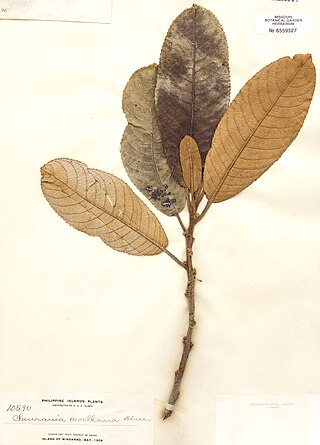
Saurauia avellana is a species of plant in the Actinidiaceae family. It is native to the Philippines. Adolph Daniel Edward Elmer, the American botanist who first formally described the species, named it after the dense covering of hazel-colored downy hair covering the underside of its leaves.

Saurauia clementis is a species of flowering plant in the family Actinidiaceae. It is endemic to the Philippines. Elmer Drew Merrill, the American botanist who first formally described the species, named it after Mary Strong Clemens, the American botanist who collected the specimen that he examined.

Saurauia copelandii is a species of plant in the Actinidiaceae family. It is native to the Philippines. Adolph Daniel Edward Elmer, the American botanist who first formally described the species, named it in honor of Edwin Copeland, another American botanist who collected many botanical samples in the Philippines.
Saurauia glabra is a species of plant in the Actinidiaceae family. It is native to Borneo. Elmer Drew Merrill, the American botanist who first formally described the species, named it after its hairlessness.
Saurauia klemmei is a species of plant in the family Actinidiaceae. It is native to the Philippines. Elmer Drew Merrill, the American botanist who first formally described the species, named it after Wilhelm Klemme, a German forest officer, who collected the specimen Merrill examined from Luzon island in the Philippines.
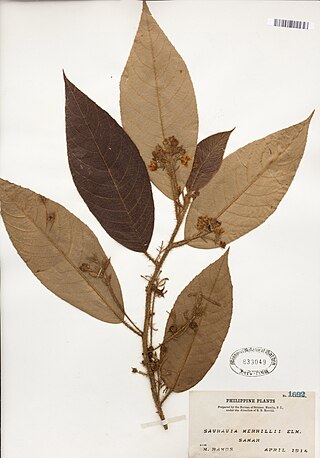
Saurauia merrillii is a species of plant in the family Actinidiaceae. It is native to the Philippines. Adolph Daniel Edward Elmer, the American botanist who first formally described the species, named it in honor of Elmer Drew Merrill, another American botanist.

Saurauia papillulosa is a species of flowering plant in the family Actinidiaceae. It is endemic to the Philippines where it is known as papayang. Elmer Drew Merrill, the American botanist who first formally described the species, named it after the distinctive abundant small bumps, or papillae, on the underside of its leaves.
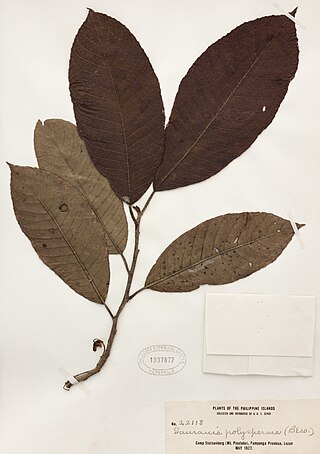
Saurauia polysperma is a species of flowering plant in the family Actinidiaceae. It is endemic to the Philippines. In the Philippines it is also known as tsuke. Francisco Manuel Blanco, the Augustinian friar who first formally described the species, using the basionym Gordonia polysperma, named it after its many seeds.

Saurauia sparsiflora is a species of flowering plant in the family Actinidiaceae. It is endemic to the Philippines. It was discovered on Mount Santo Tomas by Adolph Daniel Edward Elmer, the American botanist who first formally described the species, and named it after the small number, or sparse, flowers in its inflorescences.

Saurauia whitfordii is a species of plant in the Actinidiaceae family. It is native to the Philippines. Elmer Drew Merrill, the American botanist who first formally described the species, named it after Harry Nichols Whitford, another American botanist who collected the specimen Merrill examined.
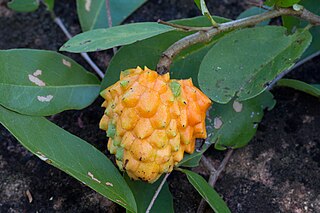
Annona nutans is a species of plant in the family Annonaceae. It is native to Argentina, Bolivia, Brazil and Paraguay. Robert Elias Fries, the Swedish botanist who first formally described the species, named it after its recurved peduncles which give the flowers a nodding appearance.

Saurauia elegans is a species of plant in the family Actinidiaceae. It is native to The Philippines. In The Philippines it is commonly called uyok and is used as a traditional medicine for lung ailments and also to decorate food dishes.
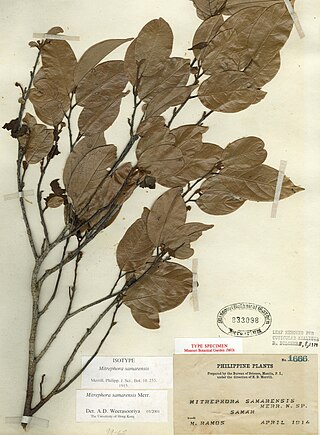
Mitrephora samarensis is a species of plant in the family Annonaceae. It is native to the Philippines. Elmer Drew Merrill, the American botanist who first formally described the species, named it after Samar, the third largest island in the Philippines, where the sample he examined was collected.
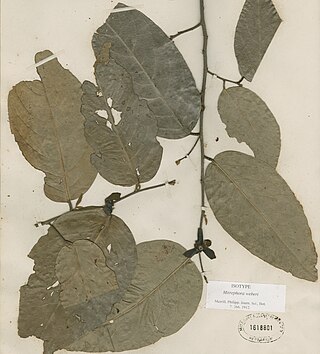
Mitrephora weberi is a species of plant in the family Annonaceae. It is native to The Philippines. Elmer Drew Merrill, an American botanist, first formally described the species and named it after Charles Martin Weber who collected the specimen that Merrill examined.
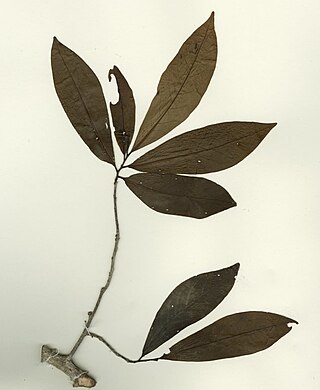
Monodora hastipetala is a species of plant in the family Annonaceae. It is native to Tanzania. Thomas Couvreur, the botanist who first formally described the species, named it after its spear shaped inner petals.
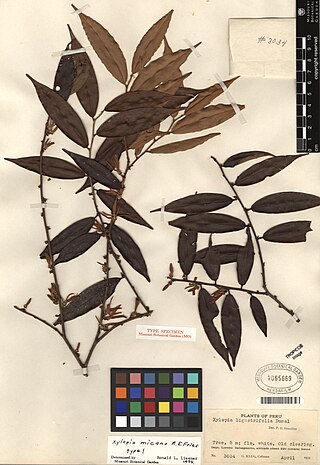
Xylopia micans is a species of plant in the Annonaceae family. It is native to Colombia, Ecuador and Peru. Robert Elias Fries, the botanist who first formally described the species, named it after the gleaming hairs on the undersides of its leaves.
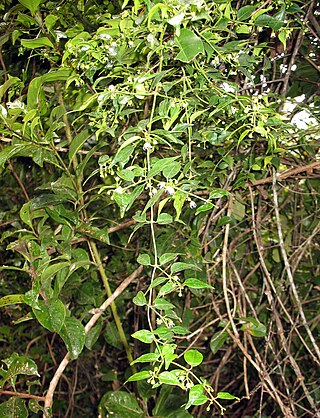
Camptocarpus acuminatus is a species of plant in the Apocynaceae family. It is endemic to the Madagascar. Pierre Choux, the botanist who first formally described the species, named it after the tapering tips of its leaves, using the synonymous name Tanulepis acuminata.
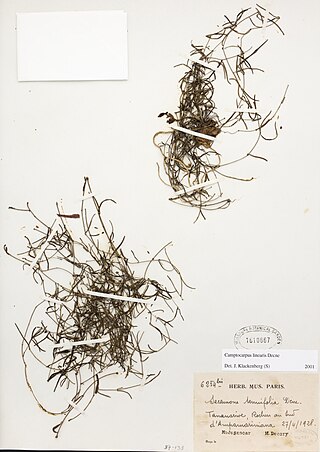
Camptocarpus linearis is a species of plant in the Apocynaceae family. It is endemic to Madagascar. Joseph Decaisne, the botanist who first formally described the species, named it after its narrow leaves.


















